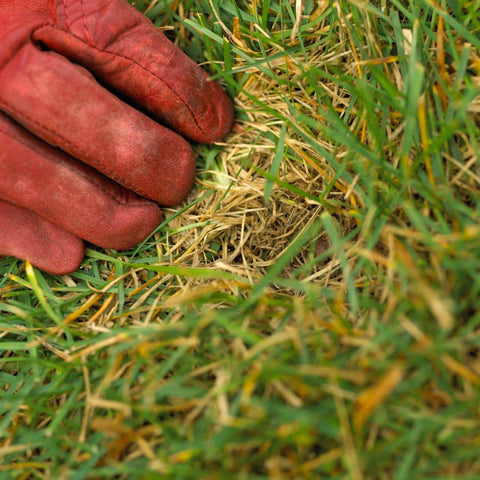Are you noticing dry, hay colored blades near your soil base? Are you concerned that thatch might be building up? Not to worry, a thin layer of organic matter like thatch can actually be beneficial! Thatch can insulate roots, keeping them warm in cooler climates and preserve moisture levels. If the layer of thatch is getting to be half an inch or more it can begin to cause problems.
Luckily, Zoysia grass does not produce copious amounts of organic matter buildup because those tough blades do not break down as easily as some cool season grasses do. It is also easily preventable using a bag when mowing or raking up clippings. My Zoysia yard was installed in the 1960’s and had a thick layer of thatch buildup as a result of going years without proper care. As a result we now mow every 7-10 days during the growing season using a bagged mower. It is also important to note that the mower blades need to be regularly sharpened. Dull blades can injure your lawn.

A great way to measure your thatch buildup is to pull a sample from your yard. You can use a tool like our 5-IN-1 Turf Plugger to pull a plug from the lawn. This way you can get an up close look at the base of the grass. If there is a heavy layer of dry, organic matter at the base of the soil it is likely time to dethatch.
For best results deeply water the lawn the day before you plan on dethatching. This will soften the soil and make your job easier. Also, try to mark any sprinkler heads or buried lines before starting - no one wants that surprise! We recommend using a stand alone or pull behind Dethatcher. There are several great choices on the market and you can check your local garden center / hardware depot to see if they rent this equipment. There is also the option of using razor rakes or common metal rakes which are a bit more tedious but will get the job done. The consequence of using a rake is that some viable grass may be removed or damaged in the process. Zoysia is self-repairing but in the heat of the summer or right before Dormancy it is not a good idea to inflict any damage. Another route is core aeration - a process that pulls small plugs of sod out of the lawn to increase air flow. The plugs then decompose over time providing a good, light layer of nutrient rich material.


The best time of year to dethatch your Zoysia lawn is in the Spring - following green-up. As temperatures are more mild and sod is actively growing again it will recover more quickly. Try to dethatch and then follow with a fertilizer application to encourage new, healthy growth.

